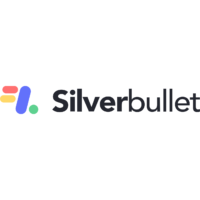Nearly $1bn of Global Programmatic Budget Spent on Unsafe Content
by on 29th Apr 2021 in News


While brand safety and suitability have fast become the number one focus for brands advertising in today’s politically and economically volatile environment, a recent study by 4D, a division of Silverbullet, and Factmata found close to USD $1bn (£717.7m) of global programmatic spend is still being spent in unsafe environments.
4D Contextual Outcomes Engine, and Factmata, a London-based AI company, teamed up to run a series of A/B tests to compare the effectiveness of traditional brand safety solutions and whether they are able to identify or block complex suitability signals.
The testing found that unsuitable content missed by existing brand safety vendors, equates to 0.71% of total spend. With global programmatic spend in 2020 reaching USD $126.5bn (£90.8bn), this equals USD $898m (£644.5m) wasted on content considered unsuitable or unsafe for brands. Specifically, 0.42% of this spend is on URLs containing high levels of hate speech, and 0.1% is on URLs containing high levels of propaganda.
The report also indicates that Factmata consistently blocks 4% to 5% of an average advertising budget, or USD $6.3bn (£4.5bn) worth of spend that is otherwise unknowingly being spent on hate speech, propaganda, sexism, and racist content.
Marco Godina, SVP Product, 4D – a division of Silverbullet, says the vast majority of traditional brand safety solutions were built at the dawn of programmatic advertising, and many have not kept up to speed with the nuances in how harmful online content is framed, worded, and produced.
“As we step into the new marketing age, where third-party cookies fade away, and contextual intelligence will surge, brands can look to adopt a variety of tools to safeguard them against future threats,” he says.
“Together, 4D and Facmata’s effective contextual targeting and brand suitability engines can give brands holistic 360-degree guidance about a page's true meaning. This partnership allows marketers to have greater confidence in where their ads are placed, in order to protect their identity and ethos.”
Dhruv Ghulati, CEO of Factmata, says dated algorithms rely on keywords, which alone do not protect a brand entirely. And, with restrictions of the walled gardens making it even more difficult to manage brand safety, businesses are searching for new solutions.
“Brands looking for safe environments need to move far beyond the scope of traditional brand safety and targeting methods. It's no easy feat. Leading brand safety tools are playing a fantastic role in the effort to protect brands but cannot do it alone. Brands need to explore additional layers of protection to gain 100% confidence in where their ads are being placed.”
Ultimately, 4D and Factmata recommend brands take a blended approach to improve brand safety and suitability.
Recommendations include:
- One size does not fit all. Brands looking for safe and suitable solutions will want to align themselves with advanced solutions beyond traditional methods that move far beyond the scope of traditional brand safety methods.
- Unsuitable content, unsuitable spend. Unsuitable content flagged by Factmata (but not traditional brand safety solutions) is estimated to be £19.6m (USD $26.8m) of UK programmatic spend, meaning 5% of budget is landing on unsafe or unsuitable environments. This investment could be utilised elsewhere.
- Nuance is key. Modern marketers who want to thrive in the new marketing age need to be aware of nuance and true context to identify the right moment and the right environment in order to align with the right message.
Read the full research paper here.
Ad SpendBrand SafetyBrand SuitabilityContentProgrammatic








Follow ExchangeWire